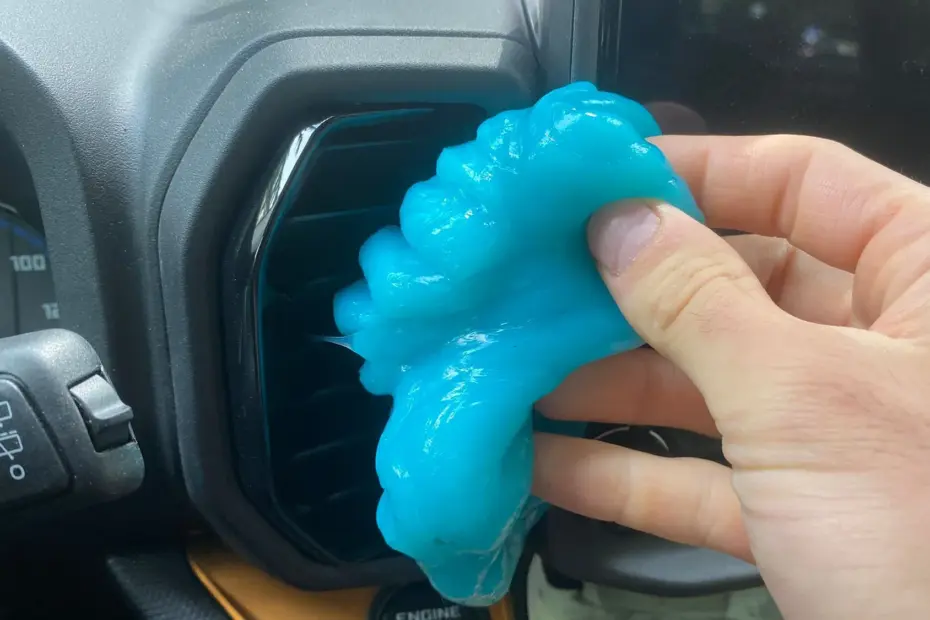Does your car resemble a post-apocalyptic scene filled with crumbs, dust, and who knows what else lurking in the crevices? Have you seen videos featuring that colorful goo that promises to magically vacuum away all the dirt? Yes, we’re talking about the famous car interior cleaning gel. But is this high-tech goop really all it’s cracked up to be, or is it just another internet gimmick?
In this article, we’ll uncover the secrets of this curious product. Get ready for a straightforward analysis, sprinkled with a dose of humor (and perhaps some healthy skepticism), to help you decide if it’s worth adding this tool to your car-cleaning arsenal. Let’s dive into this goo!
What on Earth is This Magic Cleaning Gel?
Imagine a super-flexible modeling clay that’s a bit sticky but (supposedly) won’t get your hands dirty. Essentially, that’s what this automotive cleaning gel is. It was designed to be a quick and practical solution for removing dust, crumbs, and minor debris from hard-to-reach areas in your car, like air vents, the gaps between buttons, cup holders, and panel crevices.
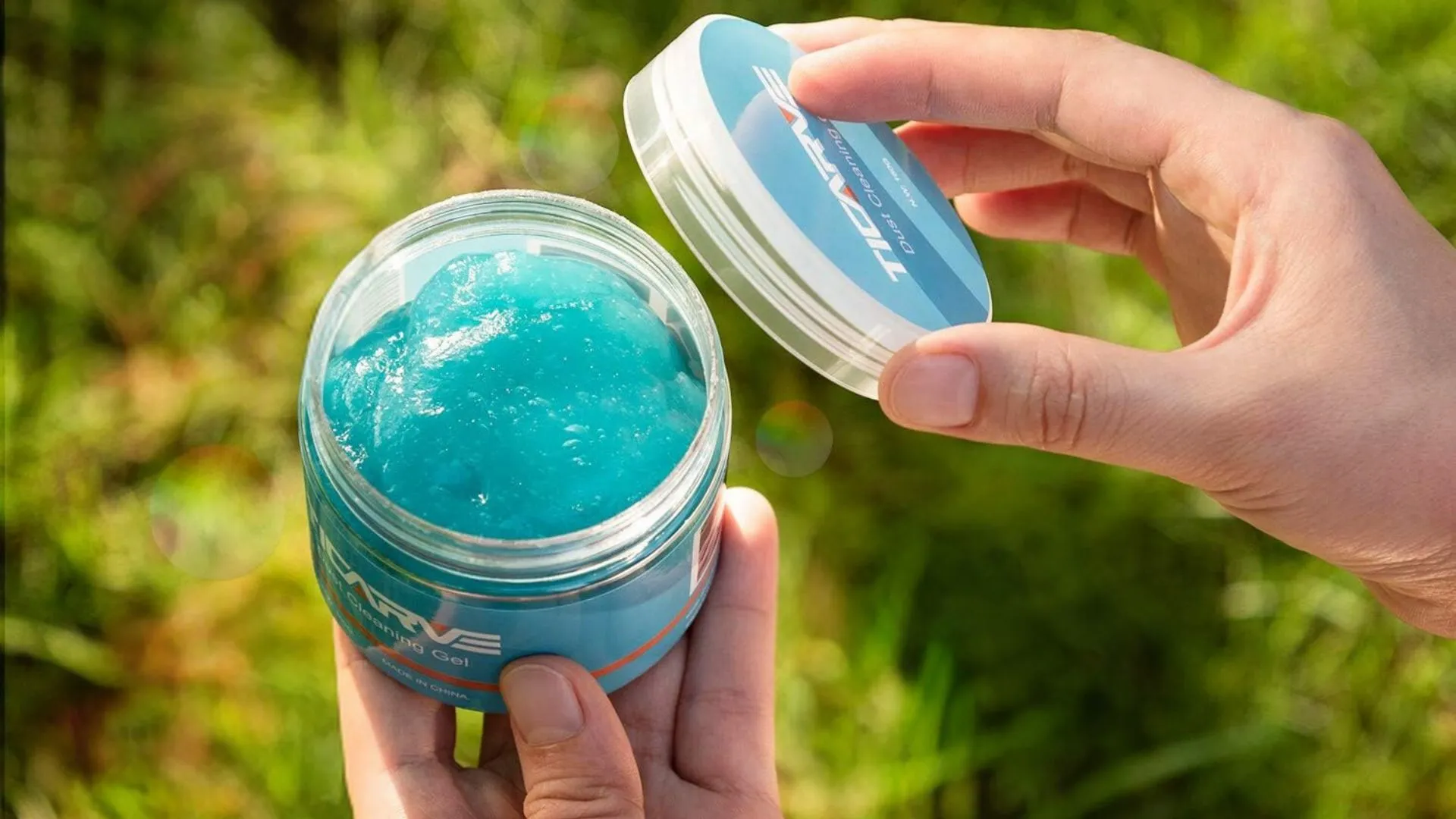
Its composition generally includes polymers (like stretchy plastic that can be biodegradable), water, and mild cleaning agents. Some even come with a pleasant scent to freshen up your vehicle. The magic lies in its consistency: it molds to surfaces, and dirt sticks to it when pulled, without spilling like liquids or needing extra cloths. And the best part? Many claim to be reusable! Is that true?
How to Use the Magic Goo Without Making a Mess?
Using the gel is easier than assembling furniture from a department store, but there are tricks to avoid creating a mess. First, both your hands and the surface should be dry. The gel hates moisture, which diminishes its effectiveness and can even break it down. Avoid cleaning your car right after being caught in a torrential downpour or spilling soda.
Next, take a piece of the gel (you don’t need to use it all at once) and knead it a bit to “activate” it. Here comes the fun part: gently press it onto the dirty area. There’s no need to play the Hulk! Let the gel settle for a few seconds, enveloping the dust and debris. Then, slowly pull it away. The dirt (in theory) should come along with the gel. Repeat if necessary. When you’re done, store the gel in a tightly closed container so it doesn’t dry out and turn into a useless colorful rock.
Quick Step-by-Step:
- Ensure everything is dry.
- Knead the gel a bit.
- Gently press on the dirt.
- Wait a few seconds.
- Pull the gel slowly.
- Store it tightly closed after use.
- Discard when it gets dark/loses stickiness.
Where Does This Goo Shine (and Where Doesn’t It)?
The gel’s strength lies in the details. You know that stubborn dust stuck in your air vent grates that even the most powerful vacuum can’t remove? Or those crumbs hiding in the nooks of your center console? That’s where the gel steps in like a superhero of precision cleaning. It adapts to irregular shapes and pulls up loose dirt effortlessly.
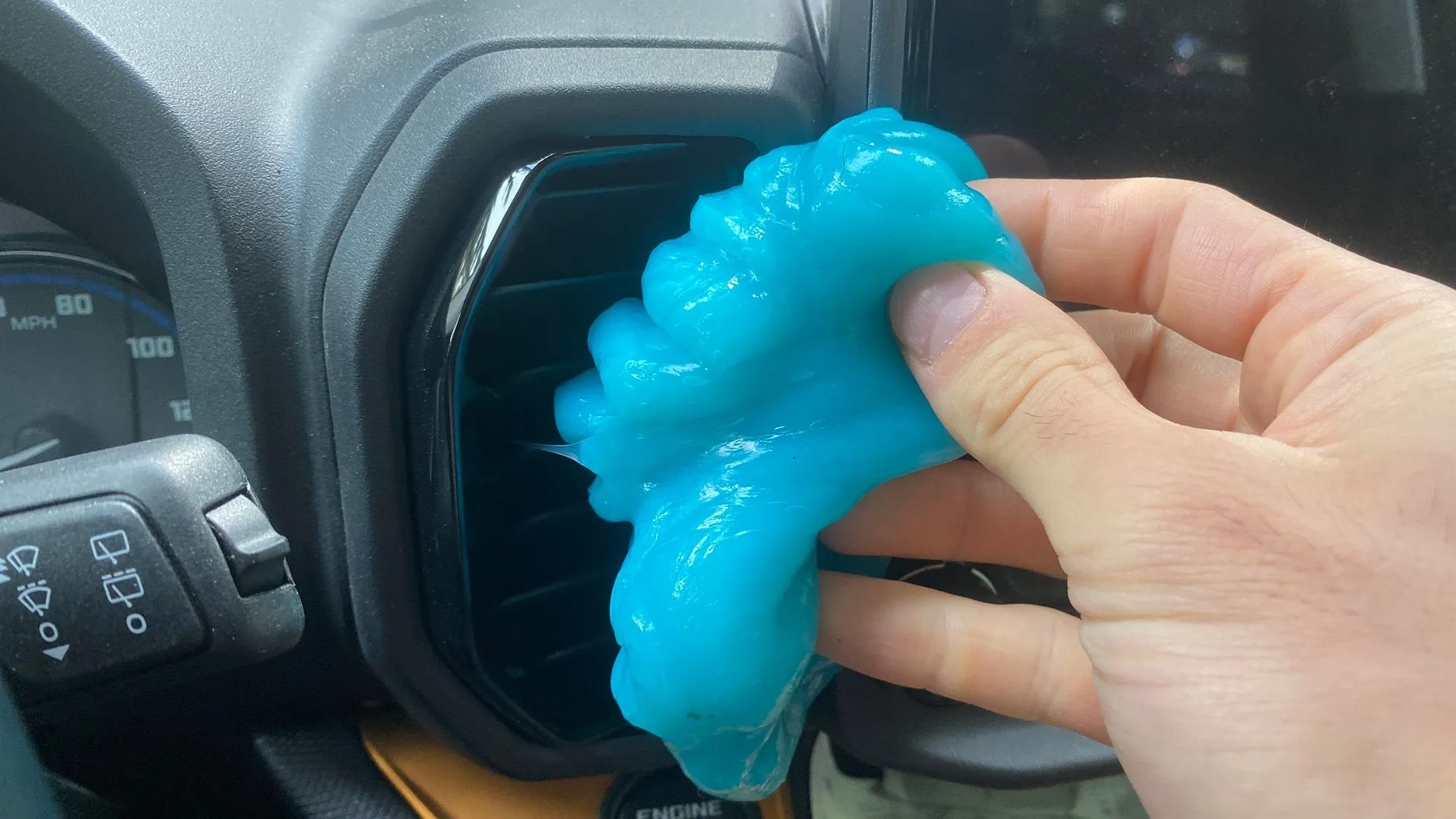
However, don’t expect miracles. The gel is great for dust, hair, crumbs, and light debris. But for greasy stains, dried spills, stuck gum, or heavy construction dirt? Forget it. It doesn’t have the chemical cleaning power to dissolve or scrub away such messes. Plus, on very large surfaces, like the entire dashboard or seats, it’s impractical and time-consuming. For those areas, good old microfiber cloths, sprays, and vacuums still reign supreme.
Surface Compatibility:
| Surface | Compatibility |
|---|---|
| Plastic (Dashboard, Console) | Great |
| Rubber (Trims) | Good |
| Air Vents / Crevices | Excellent |
| Fabrics / Carpets | Limited (only for surface dust) |
| Leather / Alcantara | Not recommended (may clog pores) |
| Wet/Oily Surfaces | Doesn’t Work |
Why Do So Many People Love (or Hate) Cleaning Gel?
Like everything in life, cleaning gel has its ardent fans and fierce critics. The fans often rave about its absurd convenience for cleaning those impossible corners. It’s quick, mess-free (if used correctly), and truly removes accumulated dust from vents and buttons, giving that new car vibe.
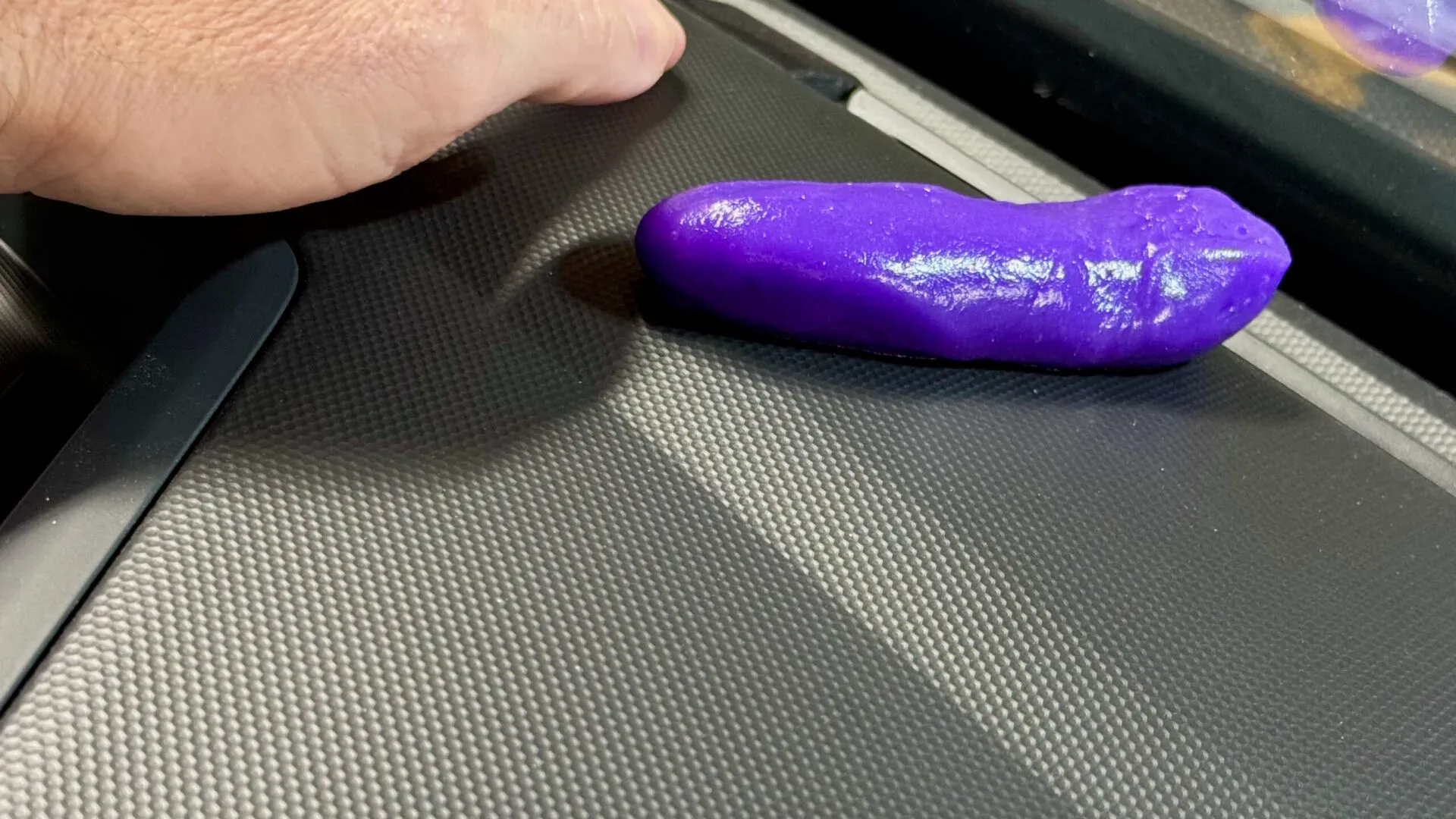
On the other hand, those who turn up their noses often point out its limitations. It doesn’t replace a deep clean, has a limited lifespan (yes, it does saturate and needs to be tossed), and can be frustrating if you expect it to remove stains or heavier dirt. There’s also the risk that, if pressed too hard or if it’s old, it may break apart and leave bits stuck precisely where you wanted to clean. Ironic, isn’t it?
Pros (The Bright Side of the Goo):
- Cleans crevices like no other.
- Super easy and quick to use.
- Reusable (up to a point).
- Leaves no sticky residue.
- Safe for plastics and rubbers.
- Versatile: can also clean keyboards!
- Many are eco-friendly.
Cons (The Dark Side of the Goo):
- Useless against heavy dirt.
- Limited lifespan (saturates).
- Doesn’t work on wet surfaces.
- Risk of breaking apart if overused.
- Not practical for large areas.
- Cost may not justify for everyone.
Is It Worth Spending Money on This Reusable Goo?
The cost-benefit question is where the debate heats up. A jar of gel can range from $4 to $10 (prices are for reference only, of course!), depending on the brand and size. The promise is that you can use it multiple times until it darkens or loses its stickiness, signaling that it’s saturated with dirt. For those who do quick and frequent detailing of their car, the investment may pay off for the convenience.
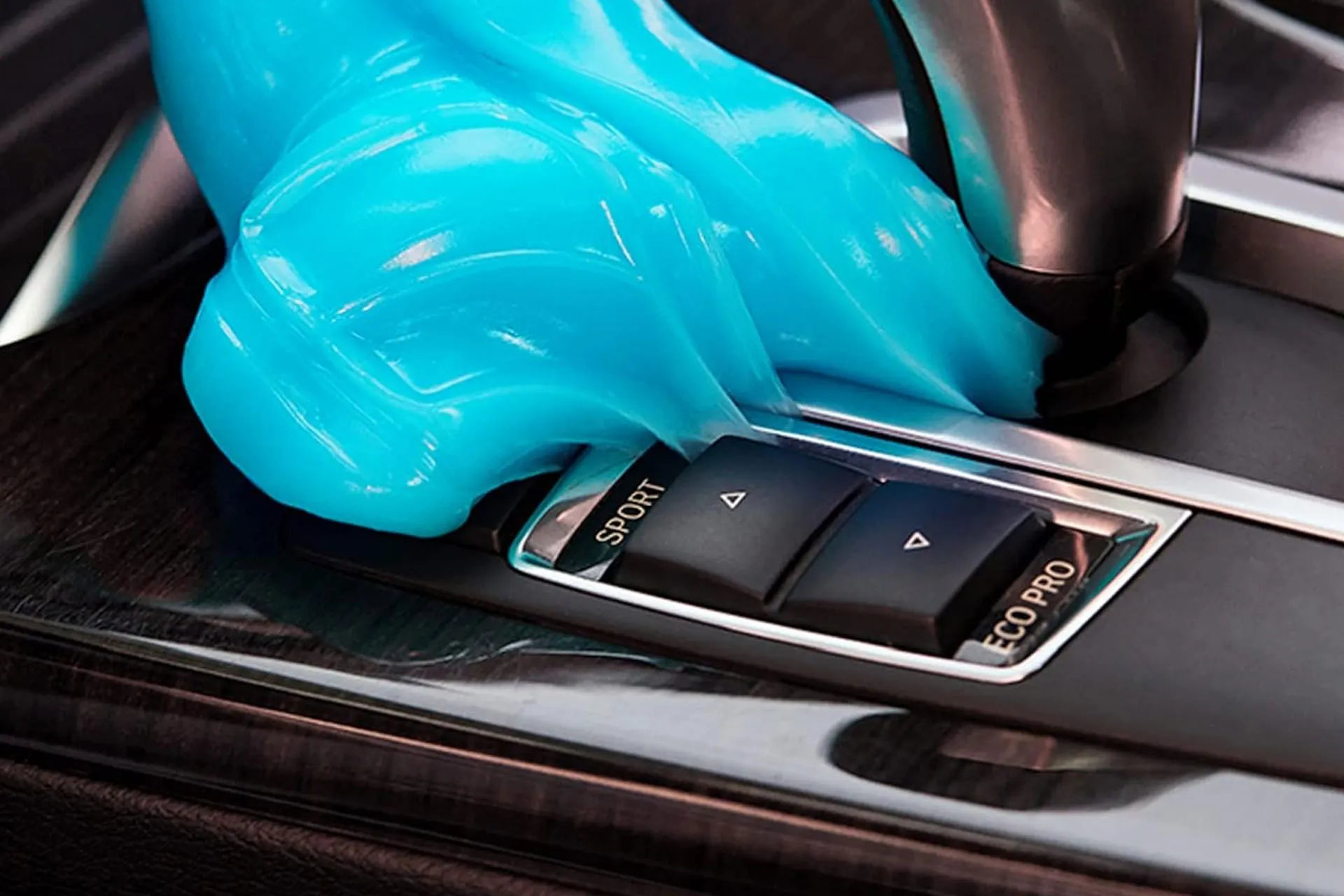
However, let’s be realistic: “reusable” doesn’t mean “forever.” The durability will depend on how much dirt you remove and how frequently you use it. If your car is constantly dusty, the gel may saturate faster. Compared to a good detailing brush and vacuum, which last much longer, the gel is a consumable. It shines in terms of convenience for specific tasks, but it’s not the most economical long-term solution for overall car cleaning.
Golden Tips to Avoid Ruining the Gel (or the Car!)
To get the most out of your cleaning gel and avoid headaches, follow these tips:
First, always test in a small, inconspicuous area to ensure your car’s material reacts well (though it’s rare to have issues with standard plastics). Second, don’t try to clean the whole car just with the gel; use it as a complement, focusing on those tricky areas. For everything else, use the appropriate products. And, for the love of your dashboard’s plastics, don’t leave the gel jar open or expose it to sunlight inside your car—it will dry out quicker than a politician’s promise.
Quick Checklist for Effective Use:
- Test first on a discreet area.
- Use for details, not large areas.
- Combine with other products.
- Keep the jar tightly closed.
- Don’t use with excessive force.
- Avoid heat and moisture.
- Use regularly to keep clean.
Frequently Asked Questions (No Nonsense)
Let’s get straight to the point with the most common questions about this automotive goo:
- How many times can I reuse the gel? It depends on the dirt, but use it until it visibly darkens or loses its adhesive properties. There’s no magic number; use your common sense.
- Does it really remove 90% of the dirt? In specific areas like air vents and for light dust, yes, it’s very effective on the first try. However, that percentage is more marketing than hard science for every type of dirt.
- Can I wash the gel when it gets dirty? No! Washing the gel will likely dissolve it or completely ruin it. When it saturates, toss it (recyclable if indicated by the manufacturer).
- Is it safe for my car’s screens and electronics? Generally yes, for removing surface dust. But avoid pressing hard on touch-sensitive screens and always check the gel manufacturer’s and your car’s recommendations.
- What’s the difference between the gel’s colors? Most of the time, the color is just aesthetic or meant to differentiate scents. The functionality is usually the same.
Final Verdict: Is Cleaning Gel a Hero or a Villain?
The car interior cleaning gel is neither a technological miracle that will leave your car spotless with a wave of a wand nor a complete hoax. It’s a tool specific to a specific task: removing dust and light debris from hard-to-reach corners and crevices. In that regard, it’s actually very good, practical, and fast.
If you’re the type of person who is bothered by that little dust in the air vent or crumbs between the buttons and wants an easy solution for quick maintenance, the gel could be a great ally. However, it doesn’t replace an overall car cleaning with appropriate products for each type of surface and dirt. It’s an interesting complement but not the definitive solution.
Did you like the idea of having this handy tool for your car’s details? If you want to try it and witness the magic (or the goo) for yourself, check out the available options by clicking the button below and keep your car shining in every detail!
Author: Fabio Isidoro
Fabio Isidoro is the founder and editor-in-chief of Canal Carro, where he has been writing about the automotive world since 2022. Passionate about cars and technology, he began his journey on the HospedandoSites portal and today dedicates himself to creating technical content and comprehensive analyses of national and international vehicles. 📩 Contact: contato@canalcarro.net.br

